Software Development Life Cycle (SDLC) is a series of stages that are followed in software engineering to develop high-quality software products. The SDLC involves several phases, including requirements gathering, design, implementation, testing, and maintenance. During the requirements gathering phase, the development team works with stakeholders to identify the project’s objectives, goals, and requirements. The design phase involves designing the software architecture, components, and interfaces. The implementation phase involves the actual coding of the software, while the testing phase involves the identification and resolution of any defects in the software.
Finally, the maintenance phase involves fixing any issues that arise and making any necessary updates to the software. Following the SDLC provides a structured and organized approach to software development, which helps to ensure that the software being developed is of high quality, meets user requirements, and is completed on time and within budget.
Phases Involved in the Software Development Life Cycle (SDLC)
The Software Development Life Cycle (SDLC) consists of several stages that are critical for developing high-quality software products. These stages typically include requirements gathering, design, implementation, testing, and maintenance. During the requirements gathering stage, developers work with stakeholders to identify the objectives, goals, and requirements of the project. In the design phase, developers design the software architecture, components, and interfaces. In the implementation stage, the actual coding of the software takes place.
During the testing phase, the software is thoroughly tested to identify and resolve any defects. Finally, during the maintenance phase, developers address any issues that arise and make any necessary updates to the software. By following the stages of the SDLC, developers can ensure that the software product meets user requirements, is of high quality, and is completed within the specified timeline and budget.

Requirements Gathering & Analysis
The requirements gathering phase is a crucial step in the Software Development Life Cycle (SDLC). During this phase, the software development team engages in discussions with stakeholders from the problem domain to extract as much information as possible about their requirements. The requirements are analyzed and segregated into different types such as user requirements, system requirements, and functional requirements. Various techniques such as studying existing systems, conducting interviews with users and developers, referring to databases, and collecting answers from questionnaires can be used to collect the requirements. The requirements gathering phase helps to ensure that the software product being developed meets the needs and expectations of the stakeholders.
Here are some techniques commonly used to gather requirements during the software development life cycle:
- Conducting interviews with users and developers
- Referring to databases or other sources of data
- Collecting answers from questionnaires
- Conducting workshops or focus groups
- Studying existing or obsolete systems and software
- Creating prototypes or mockups
- Using use cases or user stories
- Observing users in their natural environment
Design
The next step in the software development life cycle is software design. During this phase, the development team uses the requirements gathered from stakeholders and creates two designs: a logical design and a physical design. The logical design consists of diagrams and pseudo code that outline the software’s structure, while the physical design specifies the software’s components and how they will be implemented. Engineers produce metadata and data dictionaries to document the design. The software design phase ensures that the software is designed to meet the requirements and is well-documented for future reference.
Implementation & Coding
The implementation and coding phase is also known as the programming phase. During this step, the software development team begins to write program code in a suitable programming language based on the design created in the previous phase. The focus is on developing high-quality, error-free executable programs in an efficient manner. This phase involves translating the logical design into a physical representation, which can be used to build the actual software product. The implementation and coding phase is a critical step in the software development life cycle, as it sets the foundation for the testing and deployment phases that follow.
Testing
Software testing is a critical part of the software development process, as errors and defects can have significant consequences for the software’s performance and usability. It is estimated that 50% of the entire software development process should be devoted to testing. Developers conduct testing during the coding phase, while testing experts perform thorough testing at various levels of the code, including module testing, program testing, product testing, in-house testing, and user testing. By identifying errors early on and implementing remedies quickly, the software can be made more reliable and robust. Effective testing is essential for ensuring that the software meets user requirements and performs as expected in real-world situations.
Deployment
Deployment is the final stage of the SDLC, in which the software product is deployed to the end-users or the client. It involves the installation of the software and its configuration to work as intended. The deployment process includes setting up the necessary hardware and software environments, training the end-users, and preparing the software for ongoing maintenance and support. During this phase, the software development team works closely with the client or end-users to ensure that the software is installed and configured correctly and that any issues that arise during deployment are addressed promptly. The goal of this phase is to ensure that the software is ready to be used by the end-users or the client, and that it meets all their requirements and expectations.
Maintenance
The Deployment phase of the SDLC ensures that the software is operating efficiently with minimal errors. Users may require training on how to operate and maintain the software with the help of documentation. The software is regularly maintained and updated to align with changes in user requirements or technological advancements. However, this phase may encounter challenges from hidden bugs and unanticipated real-world problems.
Software Development Models
Software Development Models are frameworks or processes used in software development to guide the development team in building software. The models provide a structured approach to software development that helps to ensure the quality, reliability, and predictability of the software being developed. Some of the most commonly used software development models are:
There are many different software development models available, each with its own strengths and weaknesses. Some of the most commonly used software development models are:
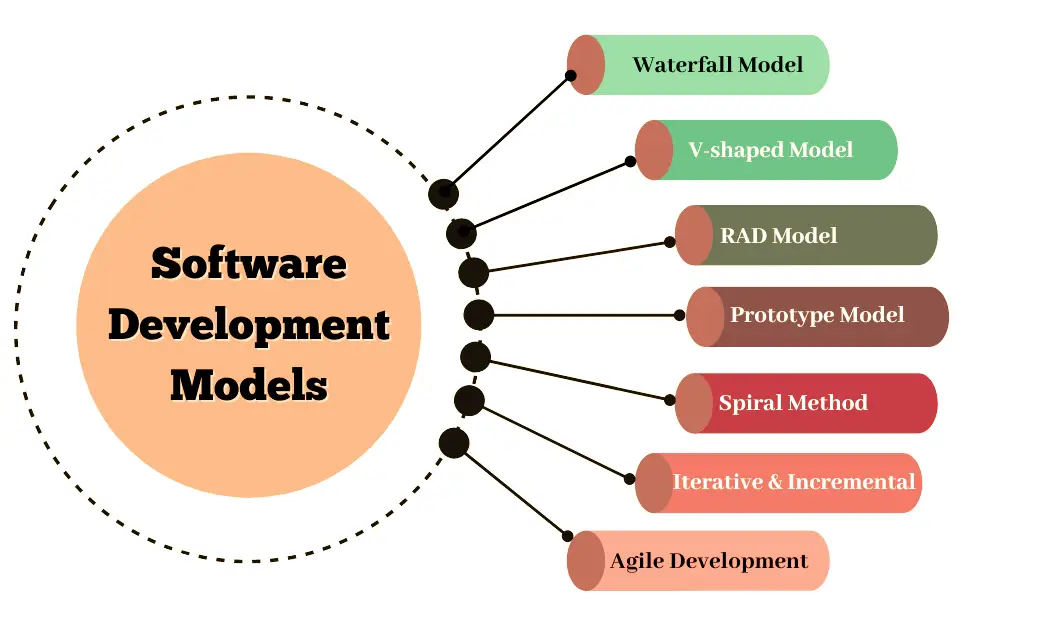
- Waterfall Model: This is a linear sequential model where each stage of development must be completed before the next stage can begin. It follows a structured approach where requirements are gathered, design is created, coding is done, testing is performed, and then maintenance is carried out.
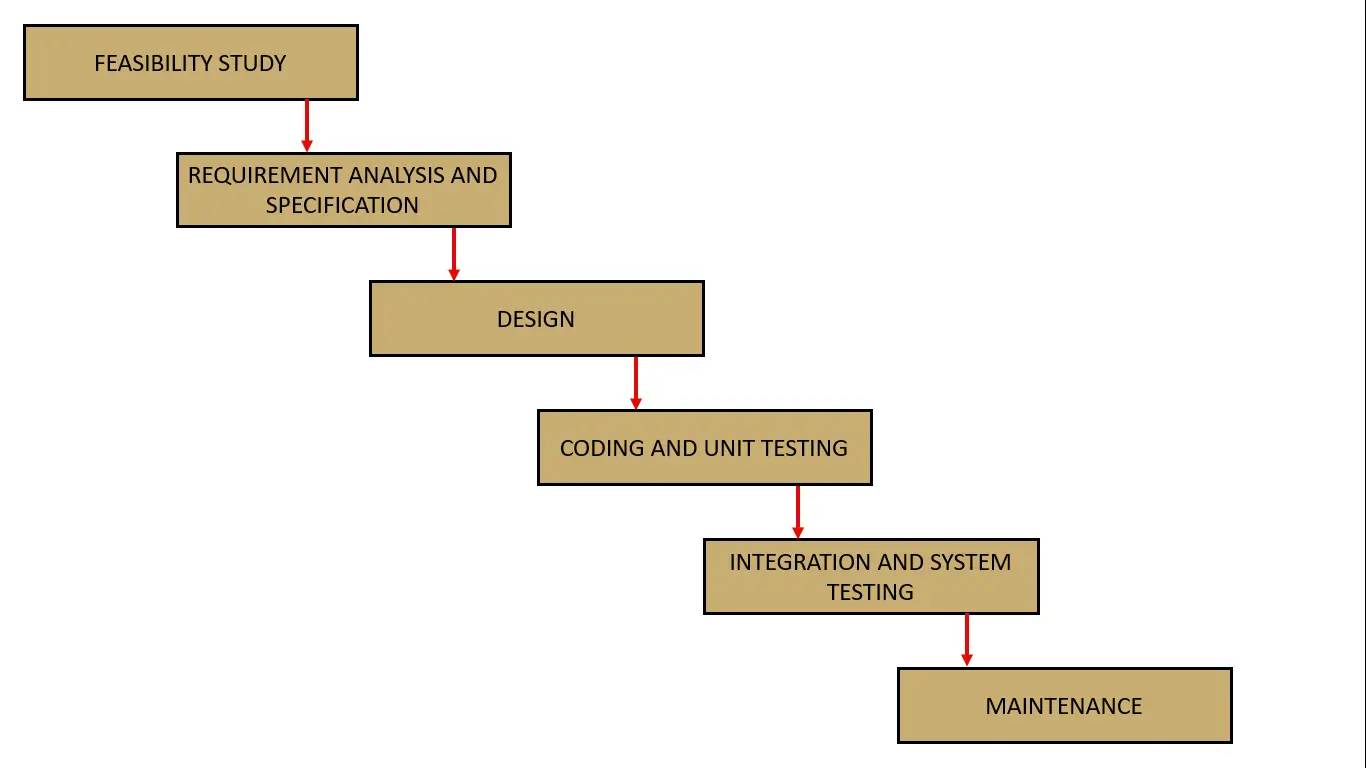
- Agile Model: This is an iterative and incremental approach to software development. It values flexibility, collaboration, and customer satisfaction over rigid process and documentation. It involves continuous iteration and feedback, which results in the delivery of working software in a shorter timeframe.

- Prototype Model: This model involves creating a working model of the software early on in the development process. This helps to identify any flaws in the software and ensure that the final product meets the customer’s requirements.
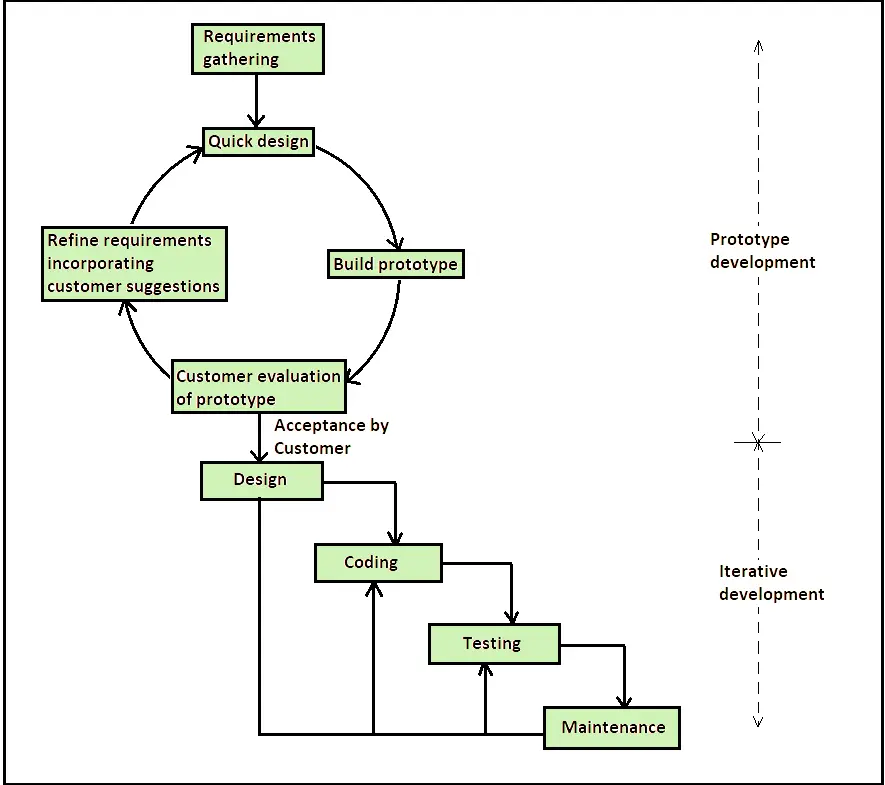
- V – Shaped Model: The V-Model is a variant of the Waterfall Model, where testing is integrated into each stage of development. The model is often used for projects where quality is a critical factor, such as in the development of safety-critical software.

- RAD Model: The Rapid Application Development (RAD) Model is an iterative and incremental development process that focuses on speed and flexibility. The model is often used for projects where there is a need for quick delivery of software.
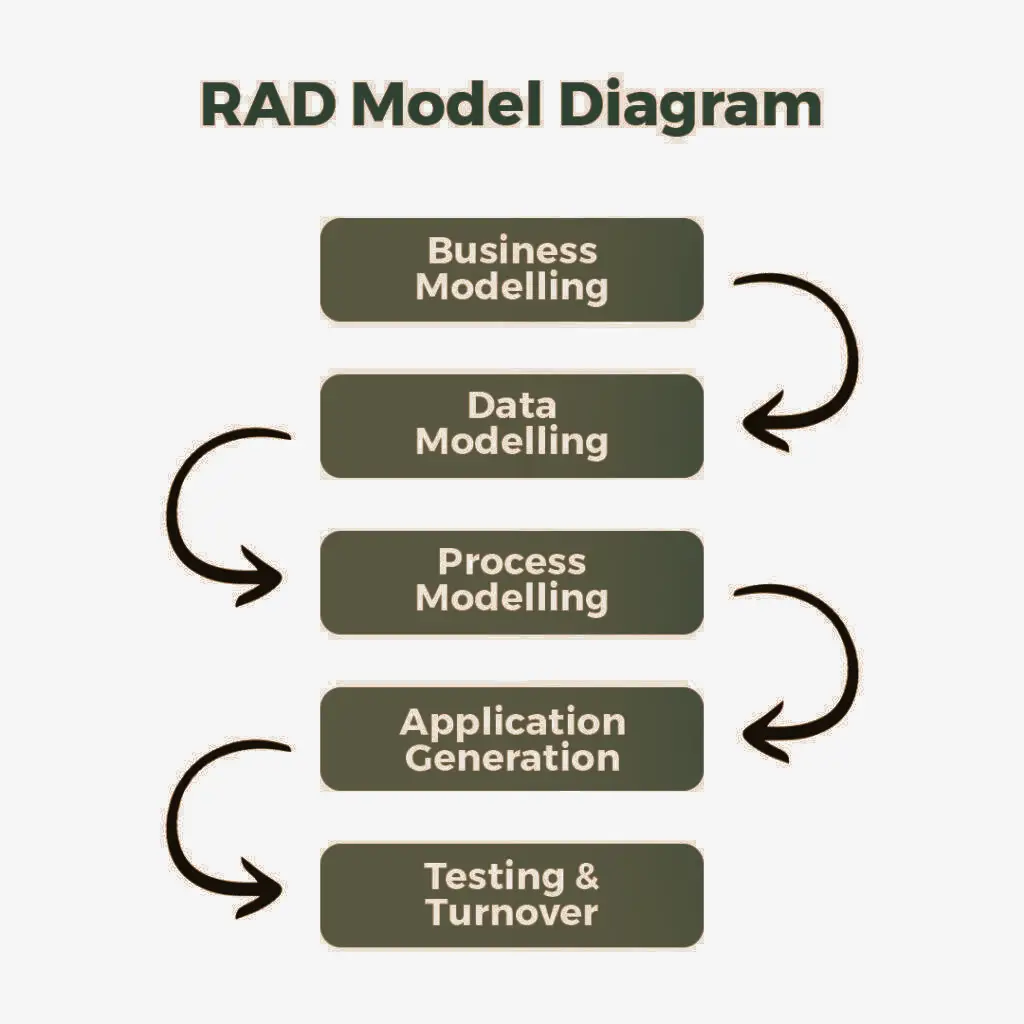
- Spiral Model: The Spiral model integrates the iterative model with one of the SDLC models. This model can be thought of as a combination of a chosen SDLC model and a cyclic process, the iterative model.
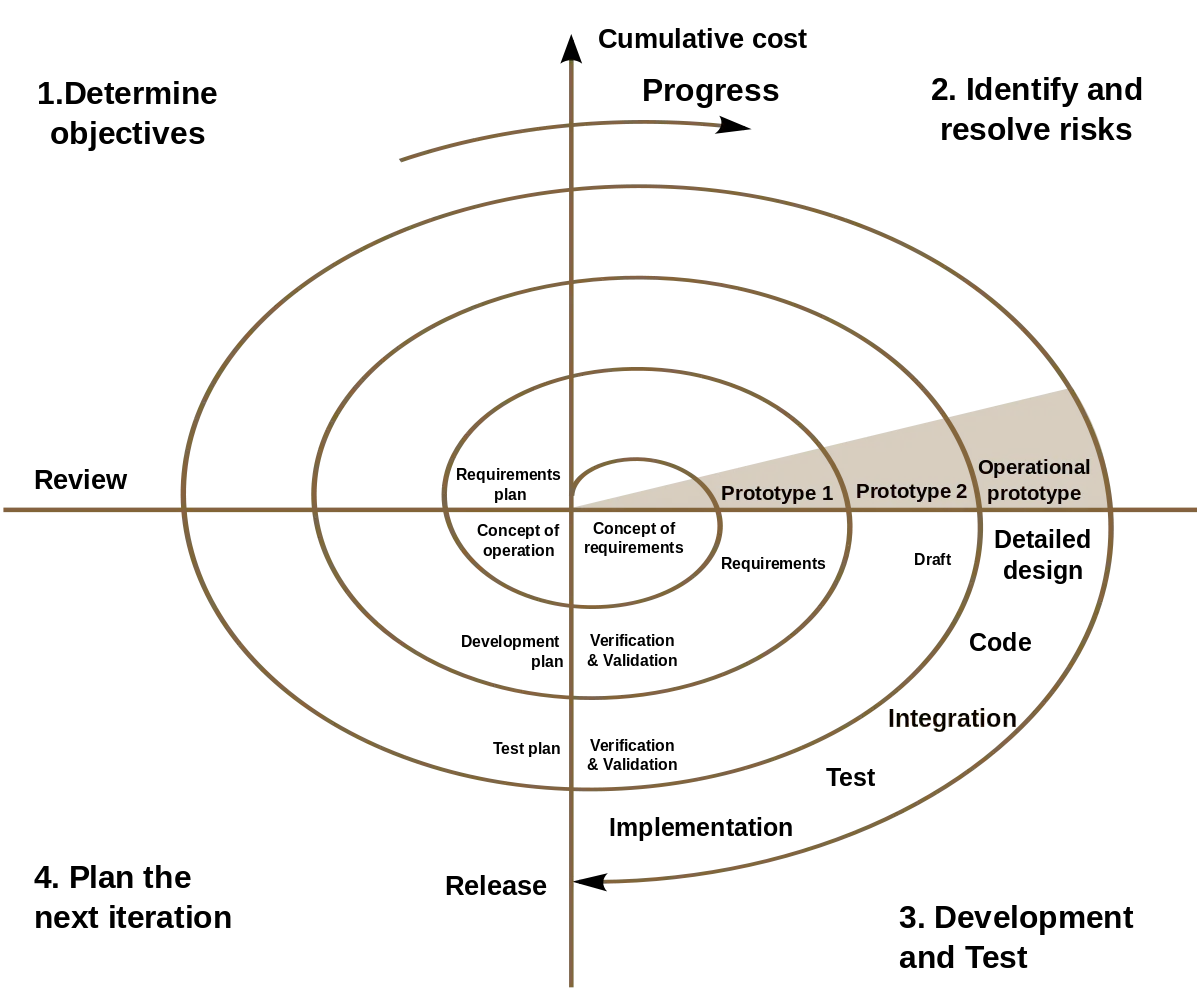
- Iterative Model: This particular model guides the software development procedure in a cyclical manner, with the process being projected into iterations. Each step of the SDLC process is repeated after every cycle, thereby creating a repetitive cycle.
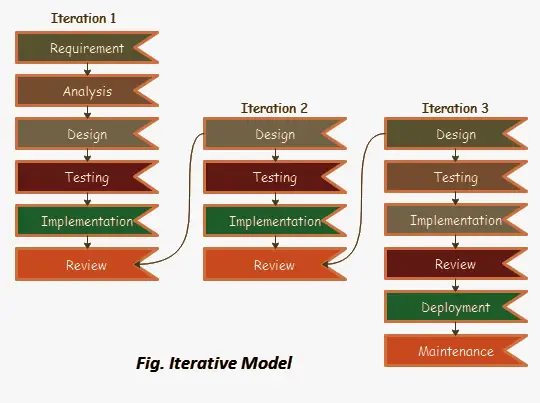
Hope this article about the Software Development Life Cycle (SDLC) and its phases and models has been able to provide complete information. Keep following our tutorials.freshersnow.com for more in-depth knowledge or concepts regarding Software Engineering.
